- Ilha Deserta
- Old Walled Town
- Faro Cathedral
- Carmo Church
- Faro Municipal Museum
- Ilha do Farol
- Roman Ruins of Milreu
- Estoi Palace
- São Pedro Church
- Ilha de Faro
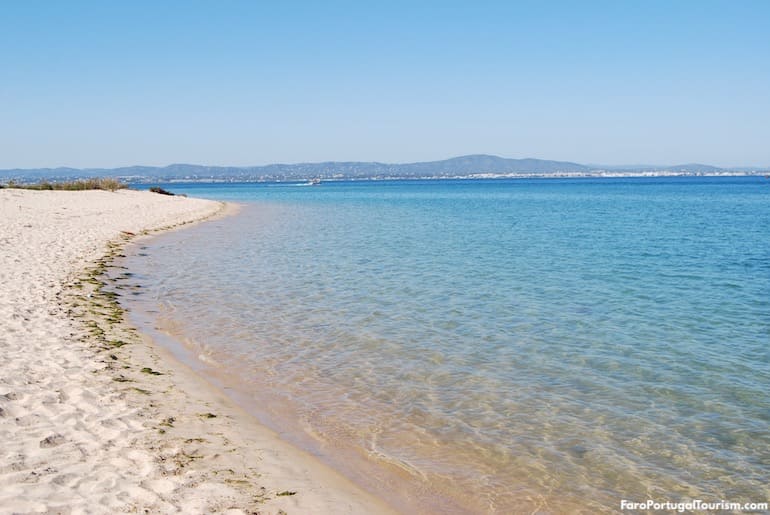
This deserted island is the experience that you won’t want to miss when in Faro. It’s accessed by ferry or speedboat, and has just one solar-powered restaurant, a lighthouse and a few sheds by the pier. It’s a stunning and pristine wonder, with a 2km-long boardwalk over dunes leading to a long beach. The western end is officially nude, but in the east it has wicker parasols and loungers for rent in the summer.
See the Ilha Deserta Guide.
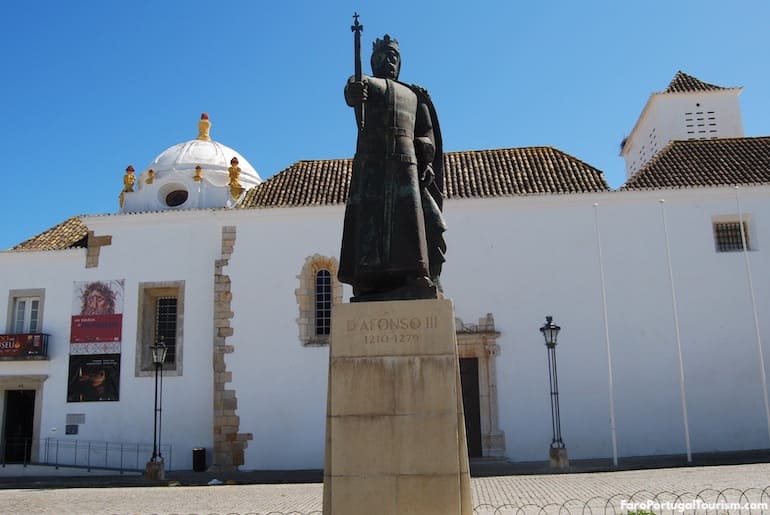
While modern Faro is the result of 20th-century urban sprawl, the Old Town is like a pretty walled village with well-preserved centuries-old monuments. That includes the cathedral and a former convent that’s now the city’s main museum (see below). It has three gateways, but the main one is a neoclassical arch (the “Arco da Vila”) erected after an earthquake in 1755 that destroyed most of southern Portugal. From that gate, the cobbled streets lead to the main square lined with orange trees and faced by the cathedral. In the surroundings are outdoor cafés and restaurants, and a number of elegant buildings, like the former Bishop’s Palace and the Town Hall.
See the Old Town Guide.
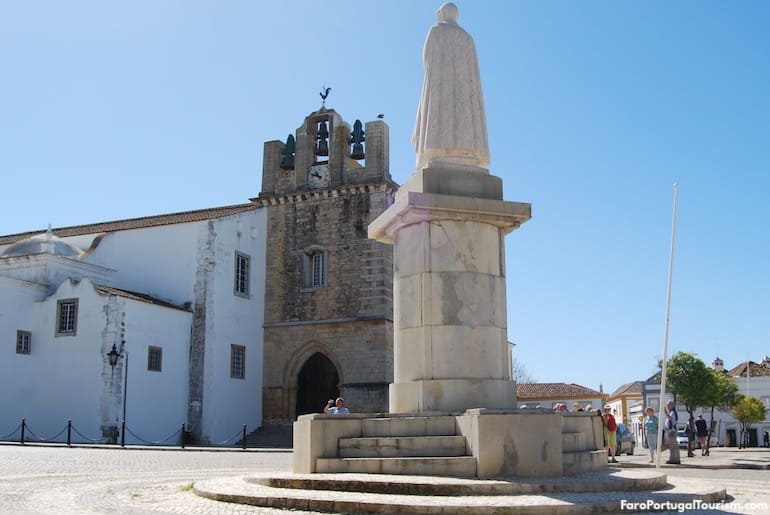
Faro’s cathedral dates back to 1251 and is one of the finest monuments in Algarve. It features a series of rich chapels in gothic, renaissance and baroque styles, and a terrace by the bell tower from where you have the best view over the city and the Ria Formosa Natural Park.
See the Faro Cathedral Guide.
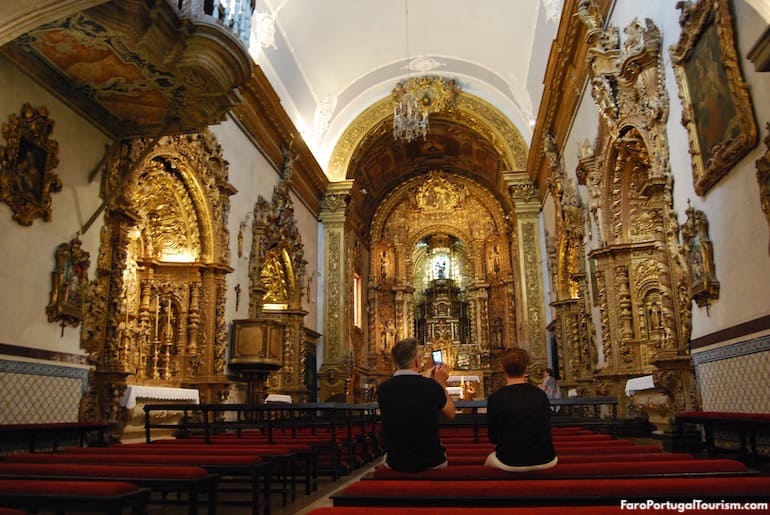
Precious Brazilian gold leaf covers much of the rich interior of this church, but it’s the macabre Chapel of Bones that gets all the attention and brings so many visitors here. Covered with the skulls and bones of over a thousand monks, the chapel was added in 1816 to the church dating from 1719. Fortunately, much of the monument escaped the destruction of the 1755 earthquake, and both its twin-towered façade and its interior are perfect examples of Portuguese baroque.
See the Carmo Church Guide.
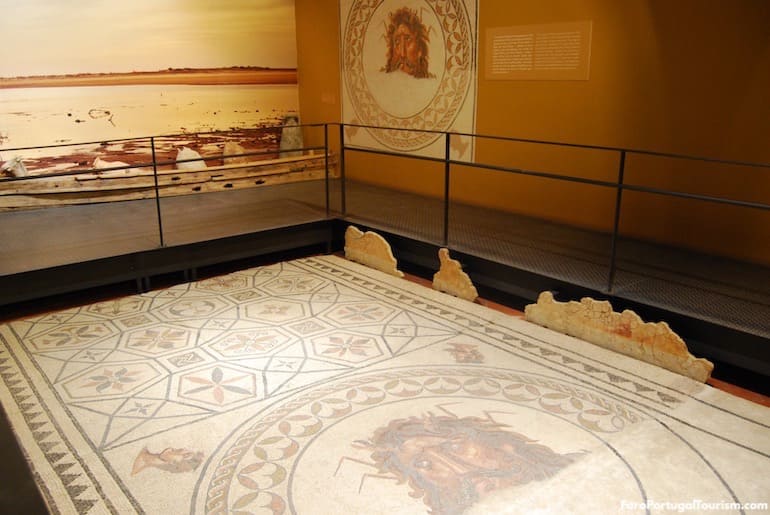
A 16th-century convent with the most beautiful cloisters in Algarve was the chosen site for the region’s richest museum. It displays a huge Roman mosaic, sculptures of emperors found in the Roman ruins of Milreu (see below), and a number of artifacts dating from prehistoric to modern times.
See the Faro Municipal Museum Guide.
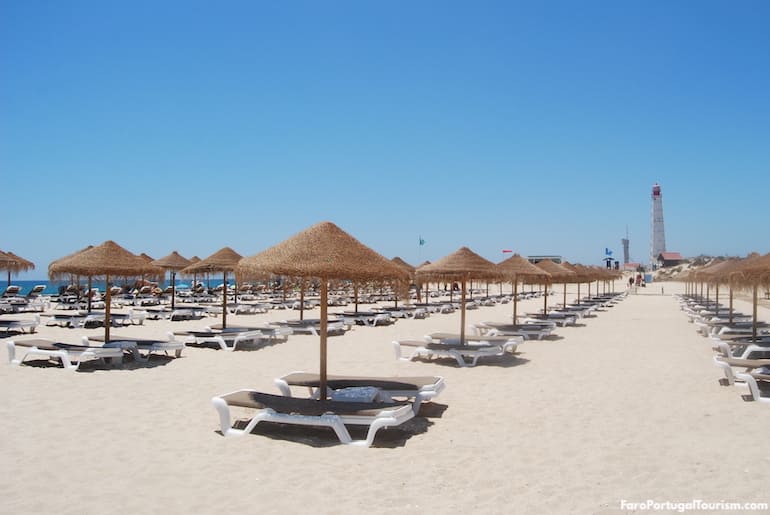
Farol (literally “Lighthouse”) is a tiny fishing community on one of the barrier islands by Faro and it has a wonderful beach that hasn’t yet been discovered by most tourists. It’s named after a tall 19th-century lighthouse that stands by the beach, and is a popular escape in the summer for the people of Faro. Getting there (by ferry) offers you the opportunity to admire the Faro skyline and the lagoons of the Ria Formosa Natural Park, inhabited by a variety of wildlife. When you arrive, walk straight through the picturesque fishing village, and you reach the beach. It can be crowded on the western end by the lighthouse, but keep walking east and you find plenty of space and quiet.
See the Ilha do Farol Guide.
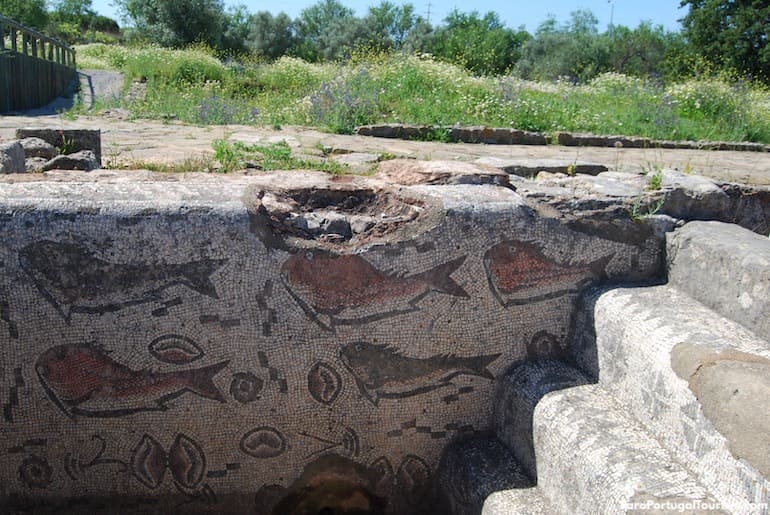
Just 15 minutes or 10km/6 miles north of Faro is the sleepy but charming village of Estoi, which is home to the ruins of a grand Roman villa. Located in beautiful countryside down the road from the center of the village, they offer insight into Roman life. While some of the sculptures unearthed on the site were taken to Faro’s Municipal museum, a small exhibition shows some of the art and explains the architecture and the history of the place.
See the Roman Ruins of Milreu Guide.
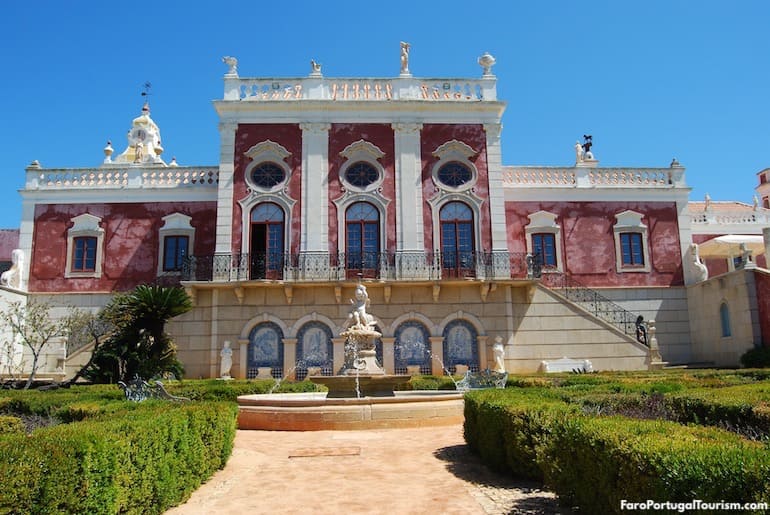
A visit to the Roman ruins should be combined with a stop at this palace nearby (it’s about a 15-minute walk away). Although it’s now a luxurious hotel, the rococo halls and romantic Versailles-style gardens are open to visitors. Built in 1782, it was the grandest residence in Algarve, and you too just might want to make it your home for a day or two.
See the Estoi Palace Guide.
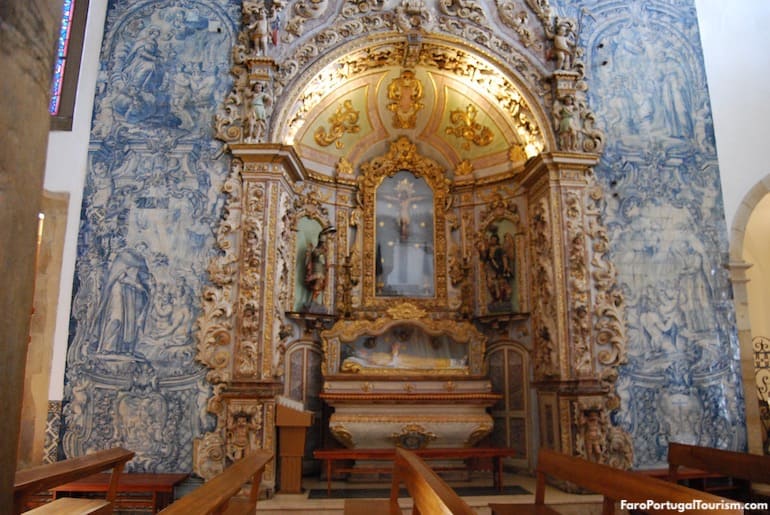
This 16th-century church was another victim of the 1755 earthquake, but was rebuilt, in the baroque style of the late 18th century. The exterior was kept plain but the interior was embellished with a profusion of gold and superb blue-and-white tile panels. Before entering, notice the stork nests on the roof or bell tower.
See the São Pedro Church Guide.
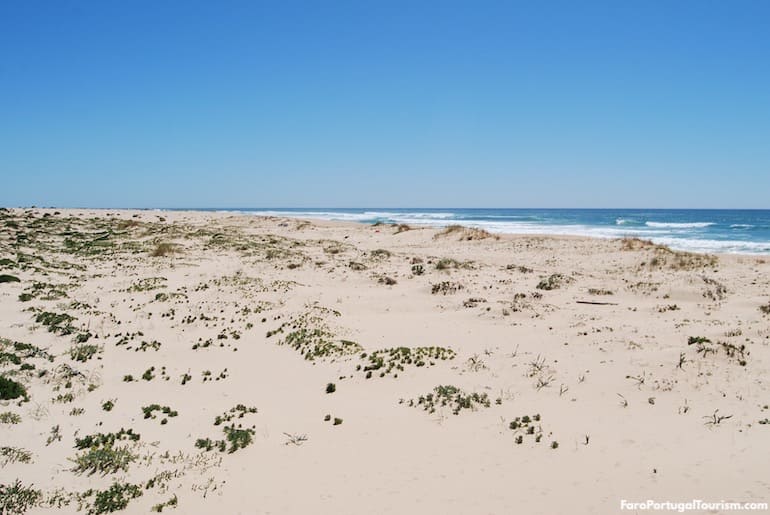
It’s not an “ilha” (island) but a peninsula, and unlike the neighboring islands of the Ria Formosa Natural Park, it can be reached by bus or car. Its beach is Faro’s most popular, and can be quite crowded in the summer. Follow a boardwalk to the east, however, and you’ll find plenty of seclusion. It’s also the only beach in Faro with accommodation, and has a number of cafés and restaurants just steps from the sand. On the northern side you have a view of Faro and the calmer waters of a lagoon, while the southern side offers waves for surfing.
See the Ilha de Faro Guide.
5 Other Interesting Attractions in Faro
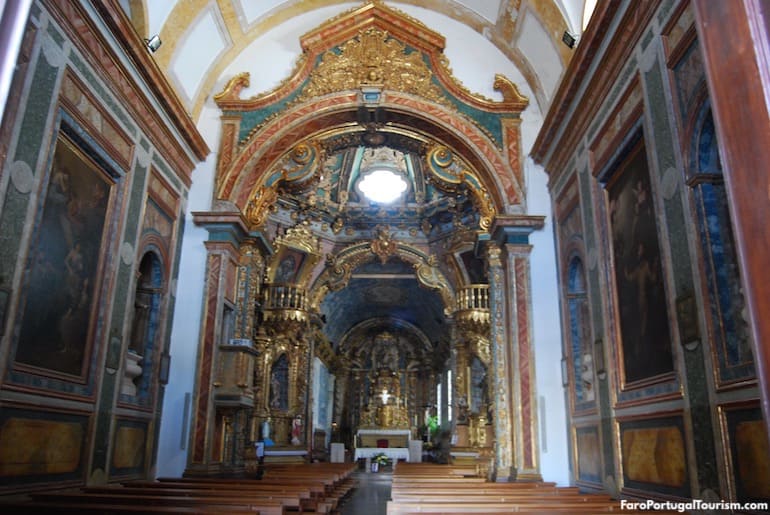
Considered a fine example of Portuguese baroque architecture, mixing rich golden ornamentation and tile panels, this church also includes paintings brought from Rome in 1792. The highlight, however, is the extraordinary tilework covering the vaulted ceiling and the walls of the chancel.
See the Igreja de São Francisco Guide.
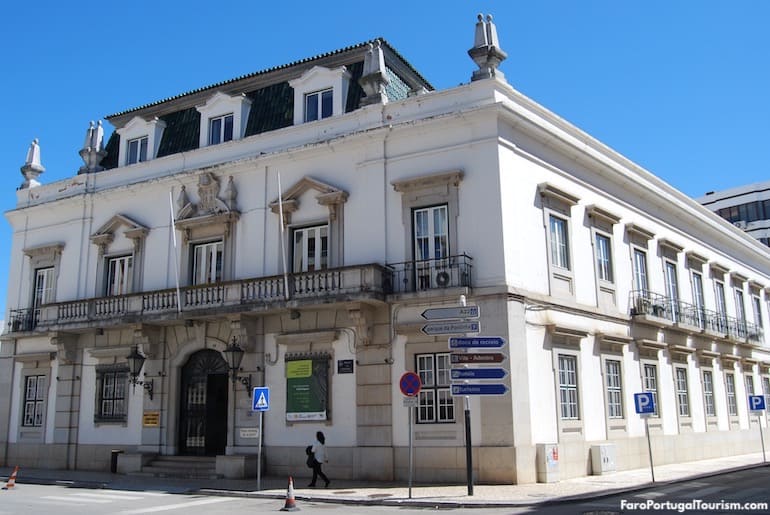
Wonder what the Algarve looked like before tourism in the mid-20th century? Head to this museum with a collection of local art and everyday items. It recreates the typical homes, displays costumes and shows the old Algarvian way of life through photographs and paintings.
See the Museu Regional do Algarve Guide.
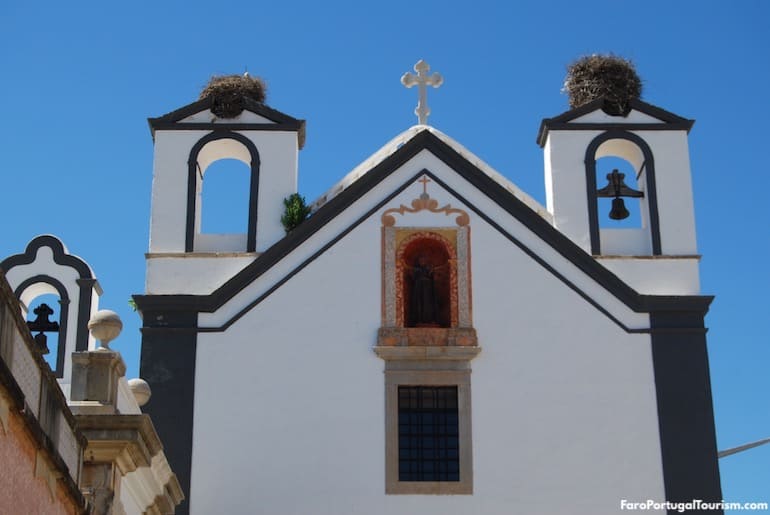
You’ll most likely find it closed, but this church is worth a detour on a visit to Carmo Church nearby, for the stork nests on its bell towers. Completed in 1622, it’s part of a convent that was dedicated to St. Anthony and inaugurated on the saint’s day. In the 19th century, the convent was taken over by the National Guard, which occupies it to this day and is therefore not open to the public. The church housed Faro’s archaeological museum (now the Municipal Museum) from 1913 to 1971, before the collection moved to its current location (see above).
Rua Serpa Pinto
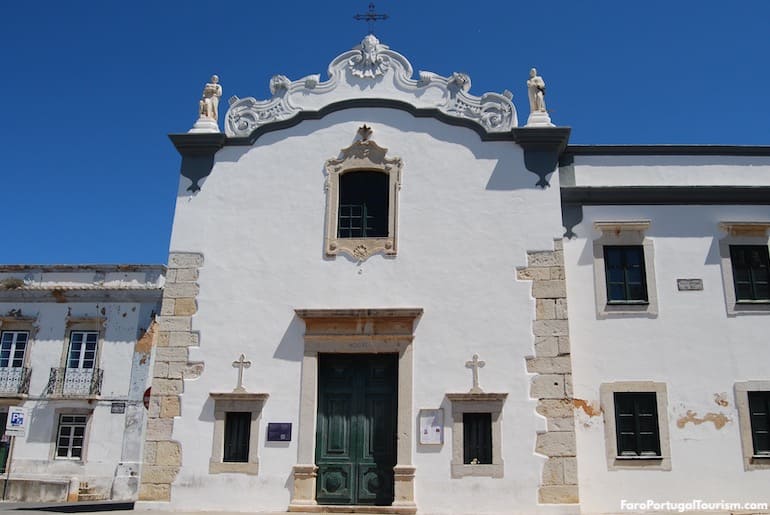
If you’re lucky to find this 17th-century chapel open, peek inside for its lovely decoration of gilded wood carvings and paintings illustrating scenes from the Old Testament. The original building was erected in 1644, but was almost completely destroyed by the earthquake in 1755. The whitewashed baroque façade and much of the interior were only completed in 1861. At the rear is an 18th-century addition -- a crucifix at the center of a tiled arch. The top of the cupola is another favorite spot for storks to build their nests.
Largo do Pé da Cruz
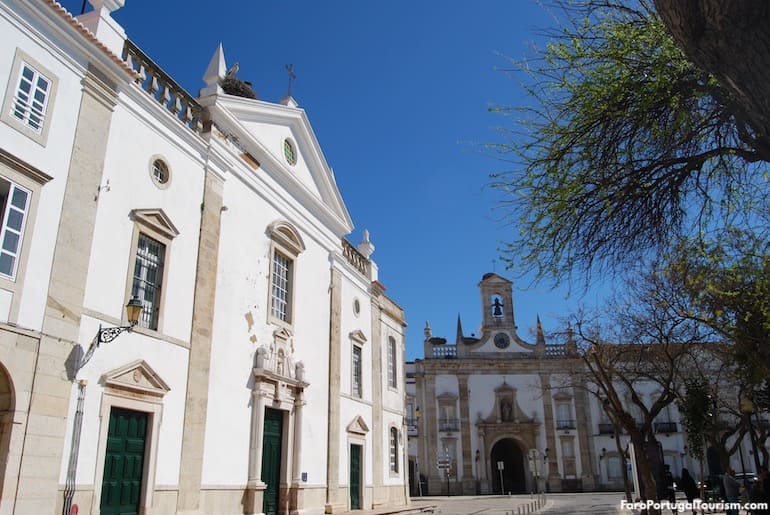
The 16th-century church faced by the neoclassical arch that leads to the Old Town houses a small museum of sacred art but the main attractions are outside -- the curious stork nests on its roof and a large tile panel commemorating Christopher Columbus’ stop in Faro in 1493 and recalling the explorer’s different voyages between the Iberian Peninsula and the “New World.”
See the Igreja da Misericórdia Guide.